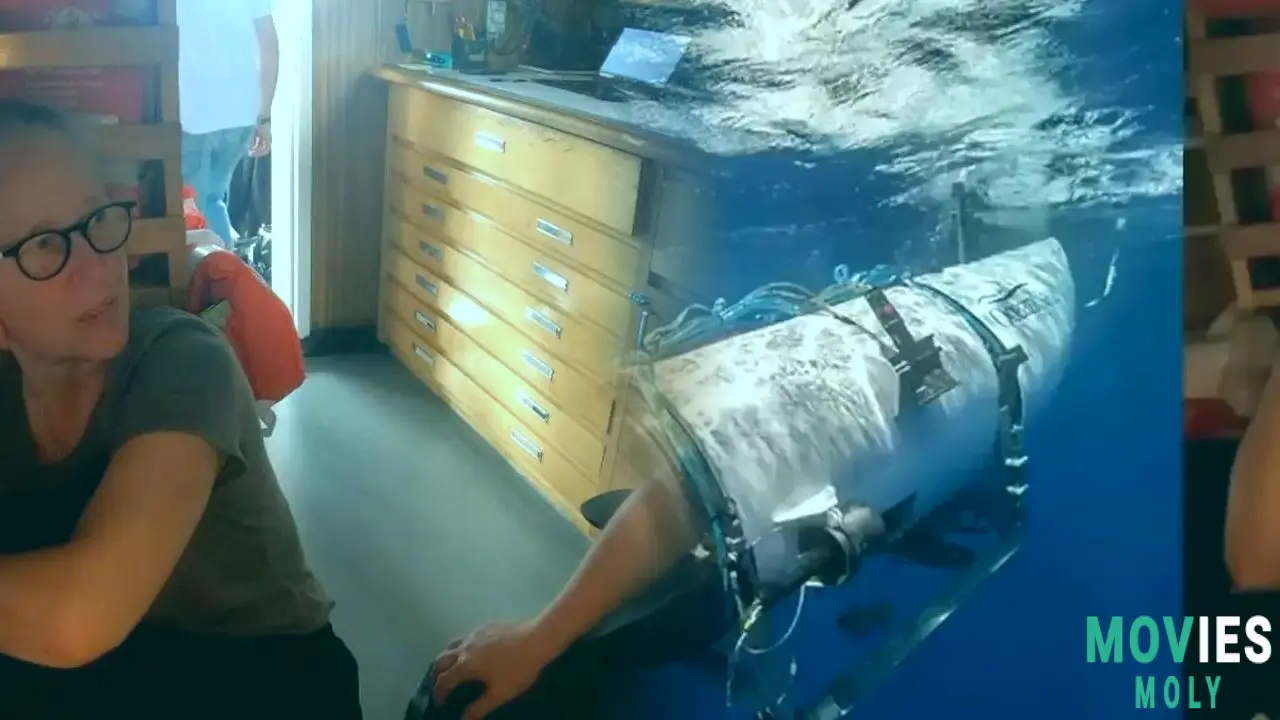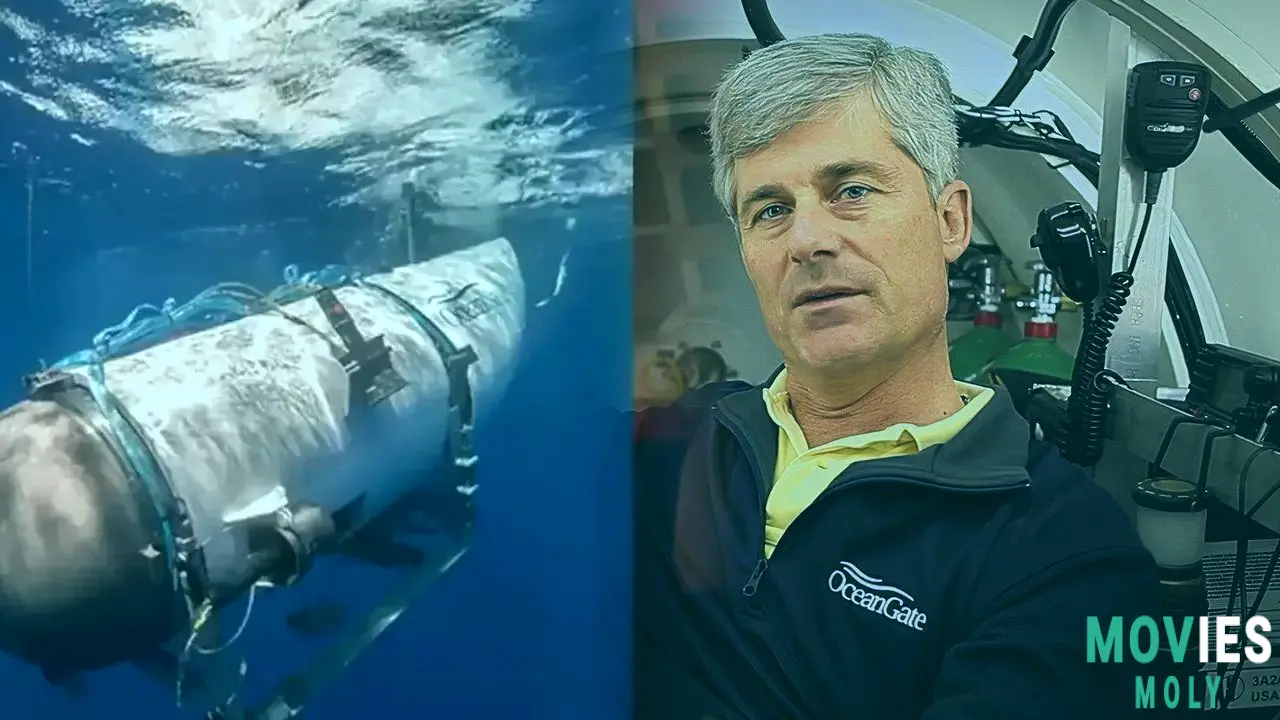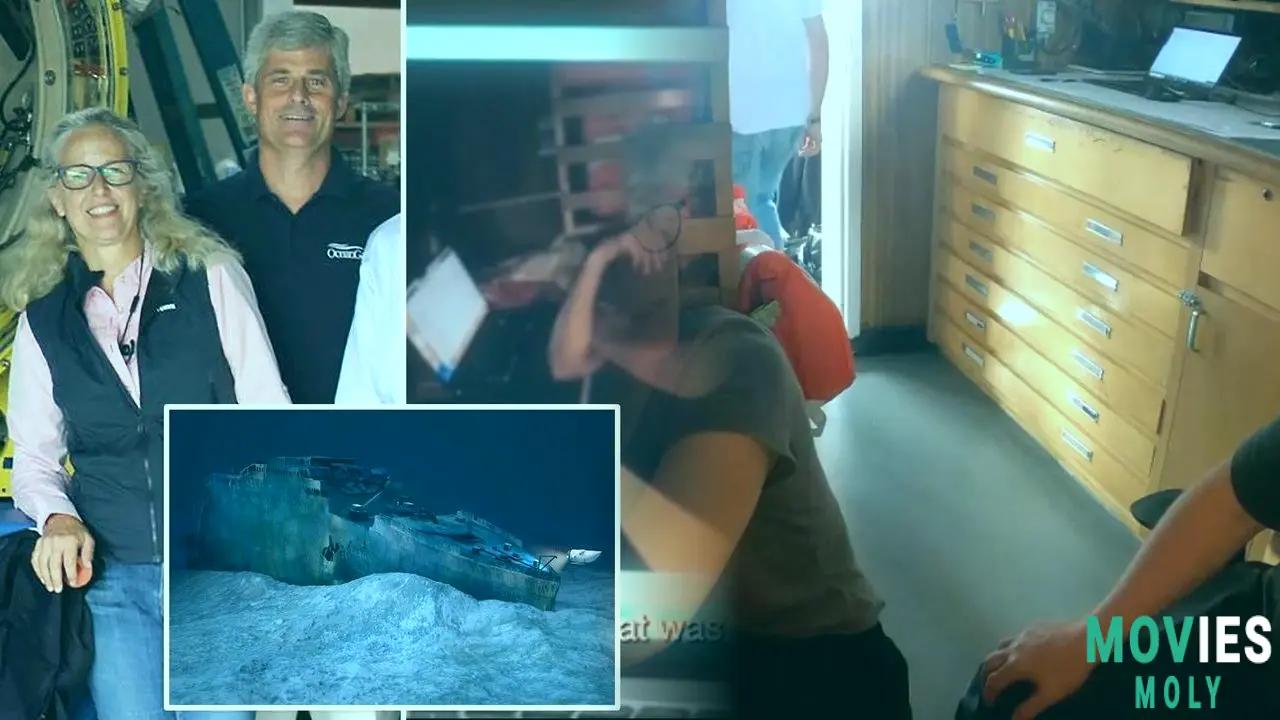Many of us remain fascinated by the Titan submarine implosion narrative. I assumed I'd heard every tragic detail. Then additional audio was released that truly punches home. It depicts the moment Stockton Rush's wife, Wendy Rush, heard what was most certainly the deadly implosion of her husband's submersible. She was on a different ship, watching the Titanic expedition unfold. This detail adds another degree of grief to an already awful occurrence.
Wendy Rush, a director at OceanGate, was listening to audio from the submersible's support ship. Other crew members were with her. Suddenly, a clear popping bang was heard over their sound system. The BBC covered this footage from the US Coast Guard Marine Board of Investigation. Wendy Rush inquired, "What's that bang." This question feels like a hit in the gut. She and the rest of the Polar Prince's crew were tracing the Titan's journey down to the renowned shipwreck. The implosion occurred approximately 90 minutes into the flight. It occurred approximately 11,000 feet below the surface of the North Atlantic Ocean. The five persons inside, including Stockton Rush, died immediately.
One Coast Guard officer indicated that viewers would hear a commotion "external to the room" and then observe how the crew responded to it. The officer described the sound as a slamming door. What is especially unsettling is that the support ship was not notified of a communication failure for several minutes. This suggested that the surface crew was unaware of the recent catastrophe. Because of the delay, Wendy Rush continued to relay messages from the Titan to the crew. Static white noise blanketed the airwaves. Then a loud boom and echo took over. This was all captured in a 20-second video released in February. It's a chilling piece of evidence in an already horrific situation.
Wendy Rush's deep family roots link her to the Titanic's tragic history.A descendant's connection to the ship adds a disturbing element to the OceanGate disaster.
A very scary revelation about Wendy Rush adds to the unpleasant nature of the story. She is Ida and Isidor Straus' great-great-granddaughter. These two were first-class guests who perished when the Titanic sank in 1912. The Strauses are notorious for refusing to be separated as the ship sank. Their narrative was also featured in James Cameron's 1997 film Titanic. A plaque in the Bronx bears a biblical inscription commemorating their narrative. This family link to the Titanic adds an unusual twist of fate to the overall OceanGate disaster. It makes you question if history repeats itself in unforeseen ways.
Stockton Rush's background was influenced by ambition and rebellion. On his father's side, he descended from two Founding Fathers: Richard Stockton and Benjamin Rush. He is named after them. His family was well-off, thanks to his grandpa, who owned a large shipping company. His grandmother even has a symphony hall named after her. Stockton Rush had aspirations of becoming an astronaut but was unable to pass the vision tests. He transferred to engineering, hoping to be a passenger instead. He told Smithsonian Magazine in 2019 that he did not want to go into space as a tourist. I aspired to be Captain Kirk aboard the Enterprise. "I wanted to explore."
He created OceanGate in 2009. He intended to make deep sea exploration accessible to everyone. It is worth mentioning that, while he held an aeronautical engineering degree, he was not a licensed professional engineer. Some experts have questioned this. Given his direct involvement in the submersibles' design and operation, it was understandable to be concerned. Titan: The OceanGate Disaster, a new Netflix documentary, reveals how his opposition to outside monitoring and strong trust in his own ideas contributed to the catastrophic conclusion. It's difficult to see and not think about the warnings he appeared to ignore.
Known issues with the Titan Submersible and the ongoing investigation into the disaster

Examining the Hull Problems and What the Coast Guard Has Discovered So Far
The Coast Guard's research revealed that the Titanic's carbon fiber exterior began to come apart about a year before the fateful June 2023 excursion. Carbon fiber, which is often not designed to withstand the severe pressures of deep-sea exploration, can break into layers. This process is known as delamination. Lt. Cmdr. Katie Williams of the US Coast Guard reported that "delamination at dive 80 was the beginning of the end." This shows that the Titan's faults were not new, but had accumulated over time.
The Titan's changeable ballast tank failed just days before its demise. This tank determines how much the submersible floats. This malfunction led the platform to spin 45 degrees upside down, sending the craft's back upward. This clue indicates that the vessel was experiencing problems just before its last dive. It makes you wonder how much was known and whether it might have been prevented. Friends of Stockton Rush claimed he "knew" his submersible would eventually fail. Karl Stanley, a buddy, testified last September during a Coast Guard investigation. He stated, "The definition of an accident is something that happens unexpectedly and by chance. There was nothing unusual about this. Everyone with access to even a small amount of information predicted this."
This statement by Stanley is quite striking. It describes a circumstance that could have been avoided. The Coast Guard plans to release a final report on its inquiry later this year. Preliminary discoveries revealed the twisted wreckage of the Titan. Some of Rush's clothing was discovered among the wreckage. There were also Titanic-themed business cards and stickers. These modest personal items provide a gloomy tone to the cold facts of the investigation.
The Ongoing Effects Of The Titan Submersible Disaster On Its Survivors And The Public

Reflecting On The Human Side Of A Tragedy That Shocked The World.
The Titan submarine disaster grabbed the world's attention. It was a scary incident that many people watched intently. The publication of the audio recording of Wendy Rush's reaction adds a very personal and painful dimension to the tragedy. It's one thing to read about an implosion. It's another thing to hear someone ask an innocent question while knowing what follows next. Her continuing to send messages after the fact, as a result of the communication latency, adds to the agony. It accurately captures the pandemonium and confusion in those dying seconds.
This tragedy raises larger problems regarding safety standards in new types of tourism. OceanGate charged up to $250,000 for tickets to visit the Titanic. According to the Titan's passenger waiver form, the sub has only completed "as few as 13" of 90 dives to the Titanic's depth. This type of evidence, combined with claims of ignored warnings and hull flaws, raises major concerns about the decisions made before to the catastrophe. It seems like a story that will be researched and pondered for a long time.
The tragedy is expected to have long-term consequences for the families of those who died. It also effects how we perceive such severe adventures. The Netflix documentary is slated to be released in June. It will undoubtedly bring the story back into the public glare. Wendy Rush's family history includes a tie to the Titanic. Now it is inextricably linked to her husband's fate. This heightens the emotional impact of her story. It serves as a sobering reminder of the dangers that come with pushing boundaries, particularly in uncharted and perilous areas like the deep ocean.



